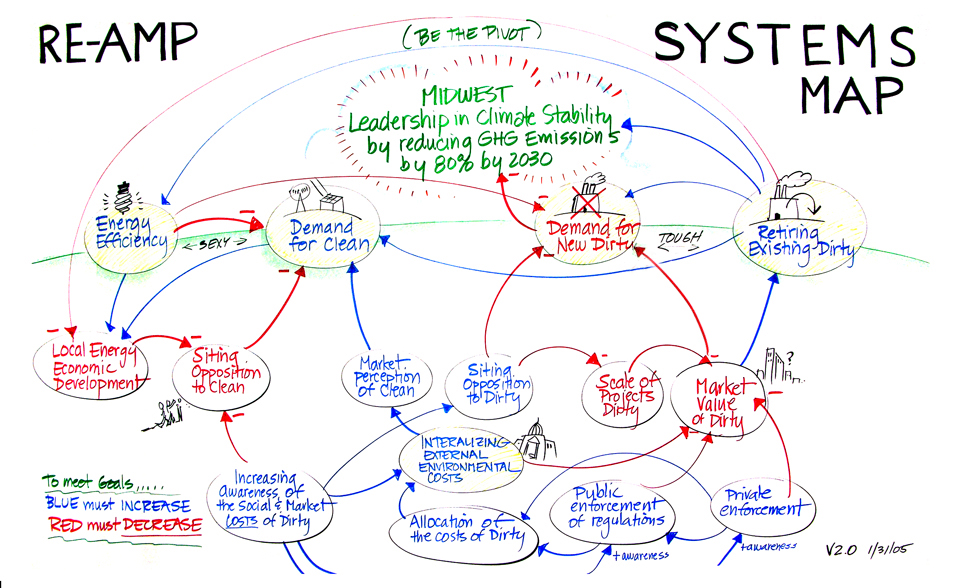Mar 06, 2022
My heart tea rs open every night watching the news about Ukraine. I’m working at feeling it—listening to the people, to their leader, to their mothers, to the reporters. We send support, but the feelings seem critical. War severs connections. I don’t want to disconnect.
rs open every night watching the news about Ukraine. I’m working at feeling it—listening to the people, to their leader, to their mothers, to the reporters. We send support, but the feelings seem critical. War severs connections. I don’t want to disconnect.
My doorway to feeling Ukraine links to the time when I was lost my beloved Susan to cancer after 46 years. The world I knew fell apart. So, no surprise the other night that I took some time to read journals from that time and began peeling the scab of understanding off my memories. So much more was felt than I wanted to feel. There was an incredible vastness and pain during that time, but I also found that within that cracking open came a vision. That vision is back calling me.
What emerged was a long piece of writing. This feeling business is not easy. But I share it anyway, and hope you can hold it as a story crucible for your own grieving, and a mirror of what we all may be going through. (The story is condensed from my journal in July of 2011.)
—————————————————————————————————————–
CANCER RECURS
“Susan and I are in the slip stream of cancer.” I wrote on July 4, 2011. “We went to the Kaiser ER the evening after she nearly fainted coming down the stairs from the CPITS (California Poets in the Schools) offices where she worked and coughed up a dime-sized clot of blood. The x-rays and CT scans that evening showed 7-8 ‘lesions’ in her lungs, two in the left, and six or in the right. The ER doctor’s face said volumes when she brought back the images. She brought us a poem. 
In a few days we were able to see Dr. Morton Stein, a pulmonary doctor at Kaiser. He ordered a biopsy. Afterward, I had a complete meltdown. I drummed the circle in our backyard and was racked with sobs and grief. All my experience with Joan Browning, our Grove designer who died of ovarian cancer at age 50 and with Connie Eskridge, my best friends Rob’s wife who died of liver cancer at a young age all came up. I knew this would be a long, hard road no matter what result, and that the chances of Susan’s surviving such a large recurrence were probably slim.
The biopsy took a couple of hours and presented us with a moment of panic in recovery when pains and lightness of breath sent us scrambling. The nurses responded with morphine. The crisis passed. The x-rays showed no catastrophic side effects (like a collapsed lung). Now the wait.
I had work in Portland and asked friend Carolyn to come over and stay with Susan, which she did. Susan texted on Thursday saying it was indeed a recurrence of the endometrial cancer from two years ago. That Friday we got all the pathology reports from Kaiser and found out the name was metastatic uterine / endometrial adenocarcinoma.
The following week I was scheduled to go on a vision quest at Mount Shasta with Chayim Barton, a Jungian therapist I’d been vision questing and counselling with for many years. These quests were sacred times for me. But I called Chayim that Friday and told him I wouldn’t be going.
Instead, I worked steadily on developing a network of resources and information surrounding this condition. Susan’s gynecologist was not available, nor was Kaiser’s cancer specialist who had worked with us before. But Rob knew of a very experienced oncologist, Dr. Laurence Heifetz, who now worked at the Tahoe Forest Cancer Center near Rob’s home in Truckee. Dr. Heifetz had retired from Cedar-Sinai in Los Angeles but Rob, serving on the local hospital board, helped bring him up to Truckee. Dr. Heifetz agreed to meet with us, so we arranged a trip to Truckee with all our data. Susan and I spent the weekend getting rocks and working on the back yard, our favorite place to commune together.
POSTPONED VISION QUEST
We drove up to the Tahoe Forest Cancer Center on Tuesday July 19th. “Larry” was terrific with us. I brought the x-rays and CT scans on a disc, and all the biopsy slides plus the pathology reports. Since they showed a 90% receptivity to estrogen and progesterone, Larry said that suggested hormone therapy initially, with that much receptivity. “I don’t believe in home runs,” he said, “but steady singles.” He was also clear that there are no cures for this kind of cancer, and that the best we can hope for is to slow it down and learn to live a chronic disease.
That evening we got a call from a Kaiser medical oncologist we’d been trying to reach, Dr. Alfredo Lopez. He took a different tact. He said this condition will surely require chemotherapy initially, to reduce the “tumor burden,” and that hormone therapy wouldn’t do that. So now we had two different opinions and the intensity of this ambiguous journey increased.
I was surprised that Susan was as good spirited as she was in all this. We took the call from Dr. Lopez at the Ritz Highland Court above North Star in the mountains north of Lake Tahoe, a treat we gave ourselves at Rob’s recommendation. It turned into a most tender and amazing time of cracking open. It seems my psyche knew I was headed for a vision quest and provided.
After swimming and steaming in the spa, Susan and I met up with Rob. He had taken the time to come over and have dinner with us and of course share stories. He’d lived the cancer journey with Connie. After eating Rob told us a story of asking Connie toward the end of her life when she had decided to stop chemo what she most wanted to do. She said “I want to go to Taos.” So Rob took her, and at a special church there gathered some healing dirt and brought it back to a special altar, where it has been since.
“I want you to have it,” Rob said, and gave the small vial to Susan. This gesture went right into our hearts. Something deep in our field shifted.
We went on to share stories about Rob’s being the adventure grandfather with Dacian, his grandson, out at the Buttes, an expanse of land north of Truckee around the core of old volcano—flat on top, rugged and scalable on the sides. At the heart of his story was his sadness at not being able to share this with Connie. Susan shared about leading our grandson Reid on an adventure walk along a small creek across from their home in Portland, and then working with him to map it out. I remember, for some reason, recounted an experience at a Summer Solstice gathering where I talked to Archangel Michael on an imaginary journey to the stars. It was a very special evening and got even more special as Susan and I fell into each other’s arms later.
THE NORTH STAR DREAM
A powerful dream woke me at 4:30. It was dark, warm, a summer night. The dream was a transmission of twelve principles of leadership that if lived, could help people hold the challenges of our times. I dreamed of a gathering of leaders who were holding these principles and opening to having purpose pour forth through their integrity and discipline, creating a renewing well of insight and hopefulness. The principles, I realized as I woke, were reflective of the main directions of Arthur M. Young’s Rosetta stone, a system I’d been studying and using for years. In the dream, they merged with the medicine wheel, which I had also been studying with Firehawk Hulin, reflecting the Origin Teachings of the Delicate Lodge. Clear as a bell they were being held by these leaders. Clear as a bell these archetypes pointed to a deeper unity under separateness.
I could not go back to sleep. I rose and recorded the dream in detail, using my color pencils in the dark. Here is the journal page from that night.

Four actions gave rise to four qualities which, upon reflection, fostered four perspectives. Held fully, they could transform awareness, as they shifted it. It was immediately clear that these roles could be learned, and practiced, and that ensembles of citizens and leaders and “holders” could create circles like the one in my dream, and that the holding power of them could be strong enough to endure the full butterfly effect—when struggling imaginal cells finally gain enough strength to grow wings in the middle of the molecular soup that was once a caterpillar.
I stayed awake, just letting the dream energy stay with me. as I wrote. I then had a vision of Connie, Rob’s deceased wife, carrying a fetus heavenward. (She was a former nun, hospice worker, and intuitive). I became that fetus and traveled to the Pleiades with it. It spoke to me and said it represented the spiritual child in both Susan and I that needed nurturance right now. That my job is to tend that birthing, that this crises was truly a new beginning.
FEEDING THE DEMON
I came back to my bed and in the early morning felt led to do a “feeding the demons” meditation regarding the tumors. I learned this process from Lama Tsultrim Allione, a Buddhist bringing forward the work of the 15th century Tibetan abbess Machig Labdrom. Demons, for Labdrom, were any physical, mental, or spiritual states that stand in the way of enlightenment. These represent locked energy that will move if they are accepted and loved, rather than met with fighting and fear. Labdrom trained women to work with plagues this way. I learned about Allione’s process on an earlier vision quest at Joshua Tree National Park from fellow quester Vivian Wright and practicing all the drive home. I subsequently got Allione’s book, Feeling Your Demons and practiced myself.
Lying in bed with Susan asleep beside me, I began by holding an image of the tumors in my mind and asked them to appear in form I could relate to. They appeared in my mind’s eye as the fetus I’d imagined earlier!
• I asked the fetus, “What do you want?”
• It said “LOVE.”
• I asked, “What do you need?”
• It said “PROTECTION.”
• I then asked, “What would you feel like if you got what you need?”
• It said “RELEASE.”
These answers felt very powerful.
I then, following Allione’s process, meditated on feeding this little white being the love and protection it needed along with honey nectar. To generate this feeling, I imagined the love I feel for my granddaughters and poured it out. Allione’s experience is that the image will, after some period, transform into something else. Simply feed it honey nectar and love and wait.
I stayed at this for many minutes. Slowly the image shifted. The fetus began to crack open on the top of its head like an egg. A baby condor emerged!
I remember my heart beating wildly at this point. I accepted the image and let it become full in my imagination.
• I asked tentatively, “What can you do for me?”
• “I can eat death and transform it into life,” it said.
• “What is gift do you have for me?” I then asked.
• “I can bridge between the worlds for you.”
• “How can I call your energy?” I asked finally.
• “Think of your studio and what you have symbolized there already!”
 I remembered instantly that at the center of my desk altar I had placed a condor icon my brother brought back for me from Peru. Then at the very opposite of my doorway was another miniature condor sitting on the head of a rock Buddha that Lightening Dove painted. A final realization was seeing, in my inner eye, the huge phoenix kite with condor sized wings that flew over the meeting area in the studio!
I remembered instantly that at the center of my desk altar I had placed a condor icon my brother brought back for me from Peru. Then at the very opposite of my doorway was another miniature condor sitting on the head of a rock Buddha that Lightening Dove painted. A final realization was seeing, in my inner eye, the huge phoenix kite with condor sized wings that flew over the meeting area in the studio!
It was now 6:00. I was in a reverie. Susan could sense this. We didn’t talk much but went out walking in the early dawn. We found and sat in a field of flowering mule ears—green velvet with yellow flowers reaching for the morning sun. I shared my vision with her. We simply sat and cried for a long time.”
————————————————————————
FOLLOWING THE BREAK CRUMBS OF CONSCIOUSNESS
I’m back in 2022 rocked by the feelings surging through me as I remember this time. Reflecting on Ukraine feels like seeing the x-rays on that visit to ER. I know there is worse to come. It will change everything.
In my new studio in Petaluma, I notice some things.
 The image of the North Star Vision I drew up in 2011 had found its way into Adobe Illustrator, then Photoshop, then several years of fine tuning the language, going back to references, and more hours redoing the subtle graphics, I noticed that this image has ended up on the center of my stand-up writing table, in the place of greatest intention.
The image of the North Star Vision I drew up in 2011 had found its way into Adobe Illustrator, then Photoshop, then several years of fine tuning the language, going back to references, and more hours redoing the subtle graphics, I noticed that this image has ended up on the center of my stand-up writing table, in the place of greatest intention.
I create sand tray altars as a practice of self-awareness. I am open to the idea that letting intentional placement of associated items can be a dollhouse size embodiment of a Feng Shui Bagua practice, in this case inspired by my North Star Vision.
Here I am, 11 years later, fully aware the world is flirting with nuclear war, and the people of Ukraine are being wantonly crushed. Why is this image at the center of my attention? It was placed there months ago.
I am also realized that I chose this picture to start my 198th journal on March 1, already rocked by what our European friends are communicating. I titled the journal FEELING AND THINKING, to support my practicing this in the coming. What might it look like if our current world leaders understood and held these principles, I wondered, and what it might look like if our Global Learning & Exchange Network took these principles seriously in practice? What will it look like if I live these principles?
Perhaps this time is that cracking open that will yield a REAL shift in consciousness. If only I have the courage to feel and hold those feelings in love. If only WE have the courage to feel and hold these demons in love.
So, I share the Leadership Circle image here in larger format in this spirit. While the Ukrainian crises is unconscionable, and more horrors are quite likely, my deepest hope is that our collective circumstantial liminality will create a social field so potent that within it visions of a sustainable future will arise.
Following is my writer’s “walk” around this circle, as a meditation on deep loss, insufferable pain, and the need for steady helmsmen in this uncertain time. I’m writing in a poetic way—compressing, layering metaphors, bringing in informal language. Read it knowing I was imagining speaking to current leaders and myself.

WALKING THE LEADERSHIP CIRCLE
Face the Eastern rising sun and Awaken to Possibilities. What freedom and creativity will come if we drop “superiority,” the elevated visionary’s robe of distortion? Open to the magic of the spiritual child.
Awakening will lead to Opening to Present Conditions, to understanding that true presence is the doorway to the mystery. This isn’t an action, but a shift in my personal field, a shift in our larger social field. I step through the threshold.
This opening leads to making Deep Connections with what I already know and feel, and the emergence of unexpected insights and understandings. We are part of an alive organism that calls for relationship.
Knowing in this way leads me to face South and feel the challenge of standing in the heat of real experience and the power and danger of many people acting out of passion arising. The way forward is to have the courage to Transcend Differences, rising above interpretation, stories, biology, appearance, and forms in a bursting out of compassion, energy, and love.
The release helps me Re-member Intention and its importance in guiding action. Let intention find its expression in my physical body, where it moves, where it sits, where feels at harmony with purpose. Let intention resonate in the social body. This is about experiencing a coherent field.
In the process I become Aware of Assumptions. My intention pushes up under my clear headedness like roses in the spring and I feel my assumptions being challenged. Can deep purpose wake us up? What is most important now? Am I “othering” this crisis and only observing? Is my motivation material survival or gain? Am I willing to reach out and really touch the others?
As the sun sets in the West, Honoring Group & Personal Needs rises like a moon of collaboration across from the sun of individual expression. And so much of what this means hinges on what I mean by “needs.” Is it to tune into more subtle personal and social fields, keeping a window open for the divine? Is it for water, some blood, a gun, a grave?
Honoring lets me Experience Interrelationships. It’s the opposite of “othering.” It’s how whales work. It’s what trees do in the forest. It’s what people do with stories big enough to hold everyone. It is responding when I hear calls for help.
The force of my intention bumps into the rigidities, the chaos, the procrastinations, and I wait for the alignment and openings that I know will come. I hold Respect for Timing. “After learning the notes and chords, you must learn to play on time,” says my music teacher Randy Craig. “It is the key to playing with others.”
I now, the North, Walk the Talk. I have a body. I have organizations. I can contribute. I can witness and listen and respond. I know that universal truth will guide right action. I chant to myself “Connect the thinking and the acting. Connect the acting with the walking. Connect the talking to the walking.” This is what warriors understand. These are the leaders people follow.
While walking I keep Guarding Against Judgement. In action I will make mistakes, I’ll have an impact, I will disrupt. Can I watch the shadows as well as the light? Pride sneaks in. Elevation sneaks in. Blame creeps in. Can I remember that even the mightiest were born of women? Can I remember we call live with our inner child?
Seeing Both Whole & Parts is the circle’s gift to leadership. It is the way of the facilitator and the alchemist magician. “We need to take another trip around our circle and hear from all our directions again,” the magister says. It’s the Circle Way.
Face the East and waken to possibilities. “Walk” around the Leadership Circle yourself. Let me know what you find. You are invited to write your own way around by simply keeping the bold words and explaining what comes up for you otherwise in your very own way. I’ll post any I receive.
In the meantime, feel Ukraine, and be ready for visions to emerge.


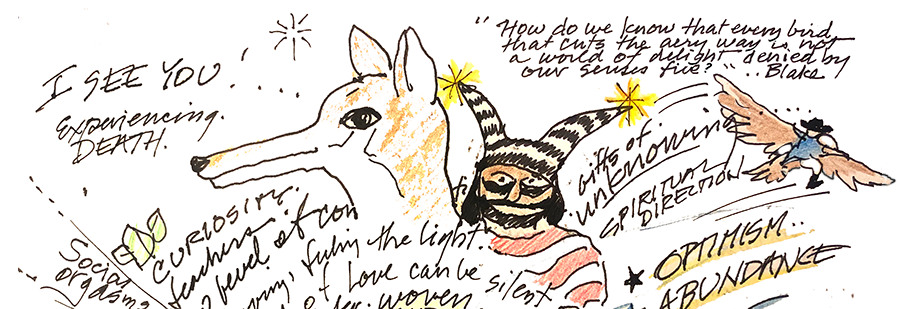

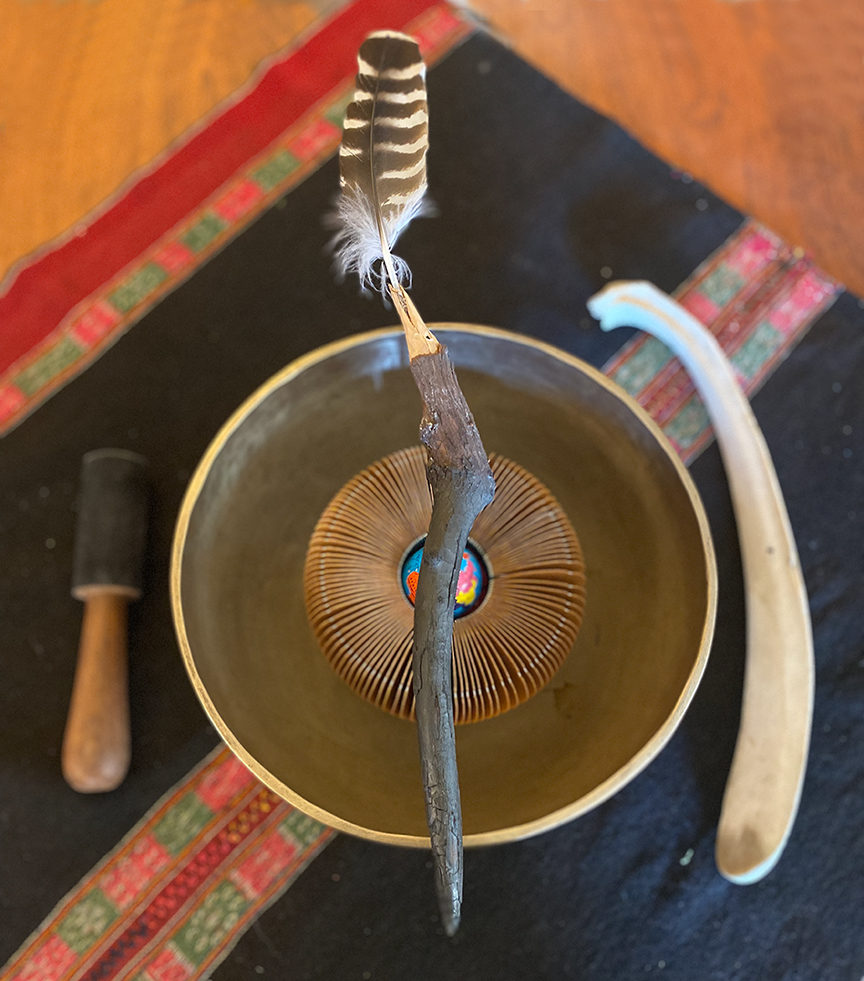
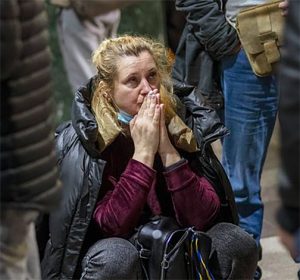 rs open every night watching the news about Ukraine. I’m working at feeling it—listening to the people, to their leader, to their mothers, to the reporters. We send support, but the feelings seem critical. War severs connections. I don’t want to disconnect.
rs open every night watching the news about Ukraine. I’m working at feeling it—listening to the people, to their leader, to their mothers, to the reporters. We send support, but the feelings seem critical. War severs connections. I don’t want to disconnect.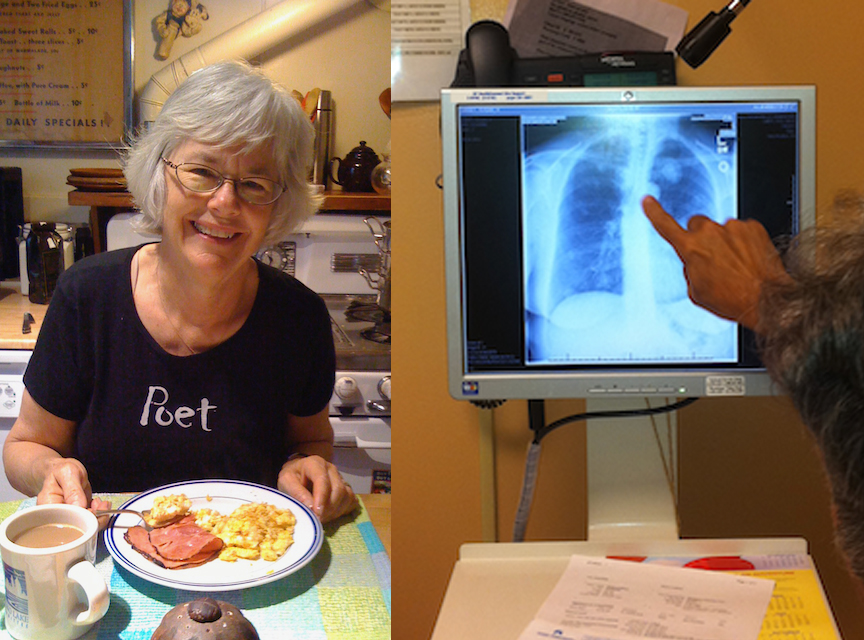
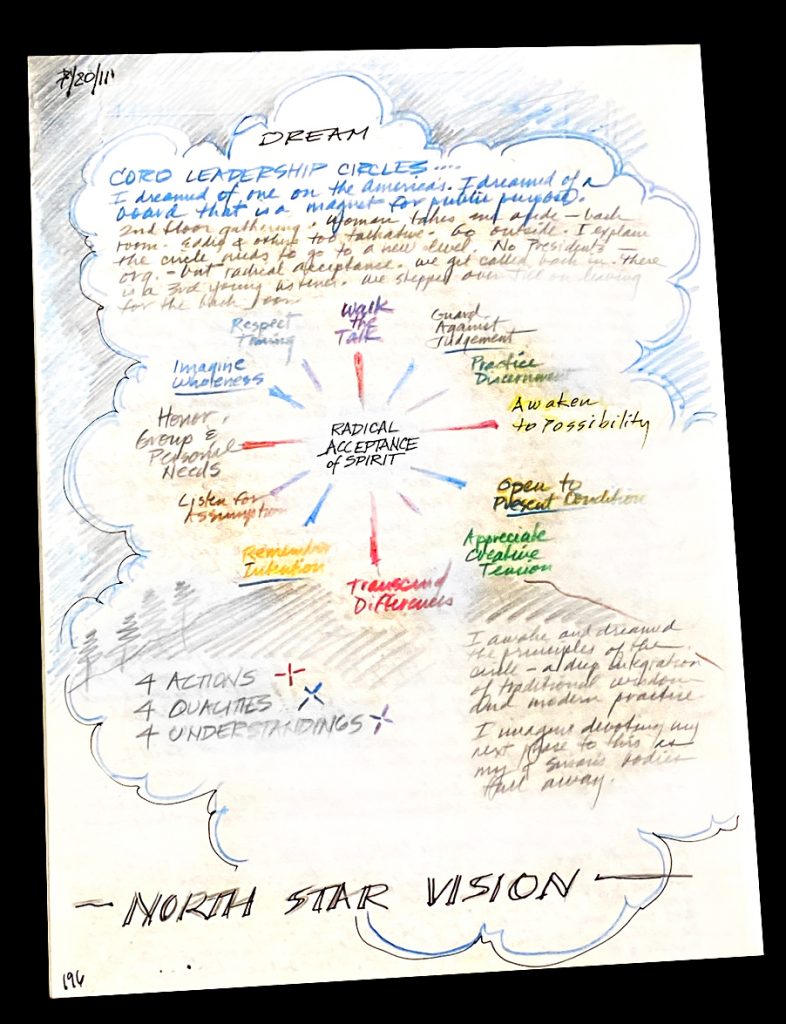
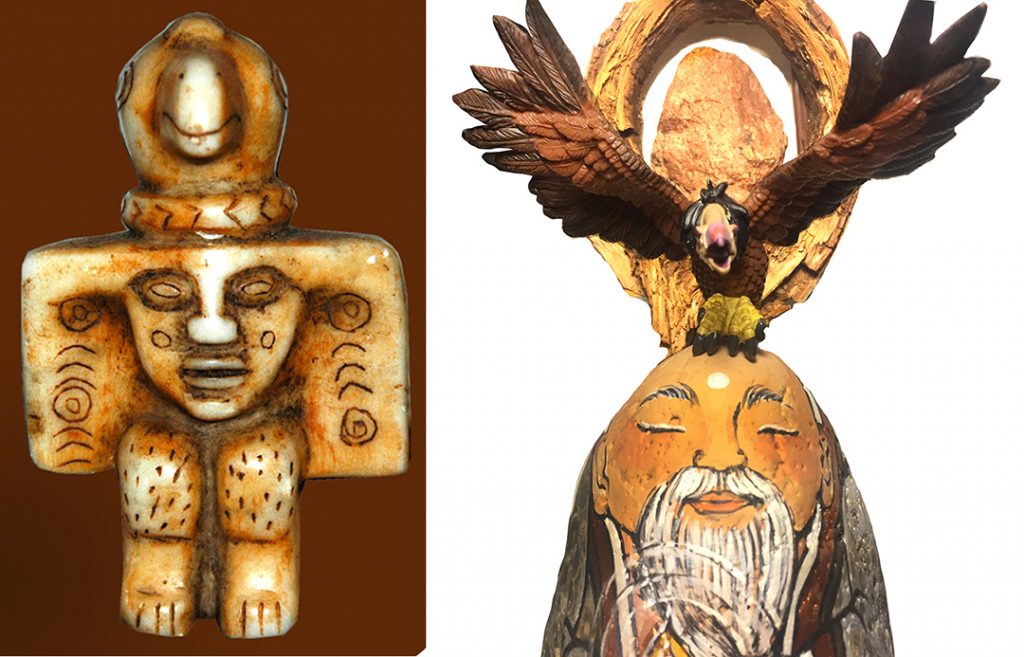 I remembered instantly that at the center of my desk altar I had placed a condor icon my brother brought back for me from Peru. Then at the very opposite of my doorway was another miniature condor sitting on the head of a rock Buddha that Lightening Dove painted. A final realization was seeing, in my inner eye, the huge phoenix kite with condor sized wings that flew over the meeting area in the studio!
I remembered instantly that at the center of my desk altar I had placed a condor icon my brother brought back for me from Peru. Then at the very opposite of my doorway was another miniature condor sitting on the head of a rock Buddha that Lightening Dove painted. A final realization was seeing, in my inner eye, the huge phoenix kite with condor sized wings that flew over the meeting area in the studio!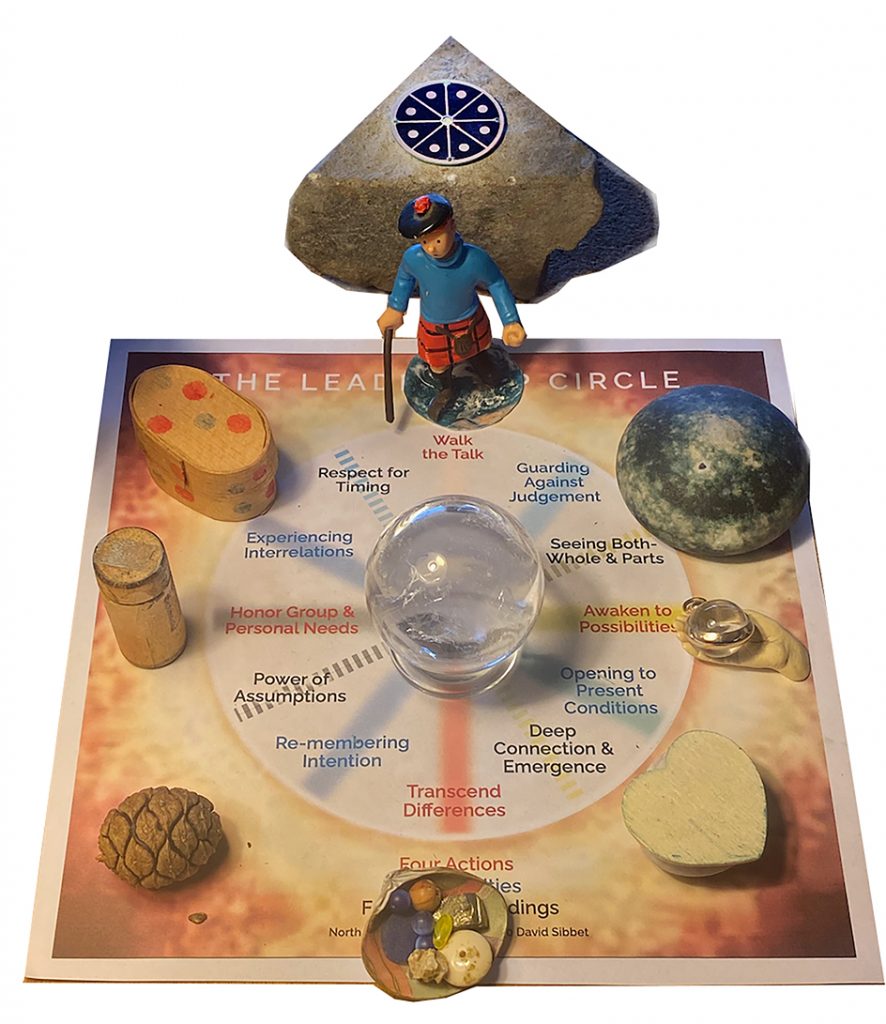 The image of the North Star Vision I drew up in 2011 had found its way into Adobe Illustrator, then Photoshop, then several years of fine tuning the language, going back to references, and more hours redoing the subtle graphics, I noticed that this image has ended up on the center of my stand-up writing table, in the place of greatest intention.
The image of the North Star Vision I drew up in 2011 had found its way into Adobe Illustrator, then Photoshop, then several years of fine tuning the language, going back to references, and more hours redoing the subtle graphics, I noticed that this image has ended up on the center of my stand-up writing table, in the place of greatest intention.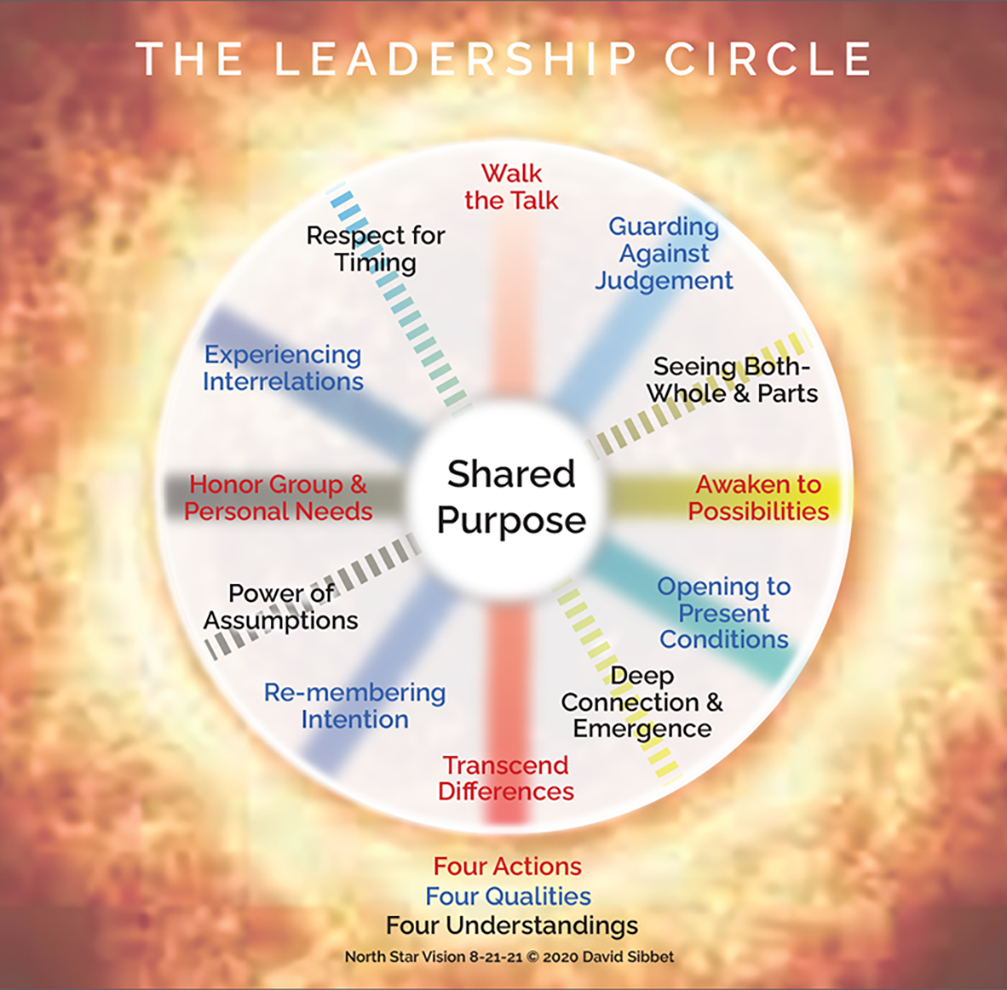

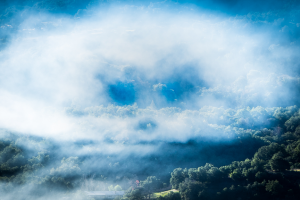
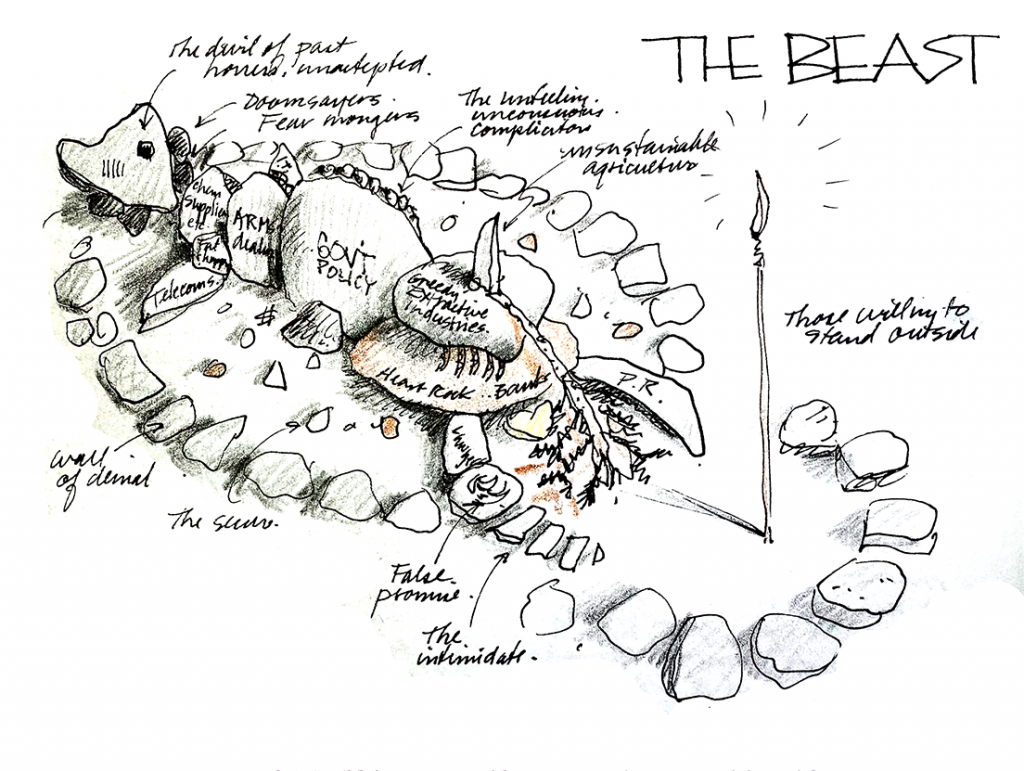 I don’t need to describe my full process here but can easily remember how powerful it felt. Building it took many hours. So did disassembling it. It was easily 8 feet long. What deeply disturbed me was my grasping experientially the extent of the systemically embedded exploitation mindset. But more disturbing was trying to imagine what could stand up to it—represented by the little wand with a feather. After hours of circling and meditating and just sitting and writing about this experience, I ended up writing some of my core values on the wand—things like the golden rule, my Bodhicitta vow to serve the awakening of all sentient beings, and staying tuned to the light, and the source of vitality I find in embracing and respecting all life. But I hardly felt resolved about this.
I don’t need to describe my full process here but can easily remember how powerful it felt. Building it took many hours. So did disassembling it. It was easily 8 feet long. What deeply disturbed me was my grasping experientially the extent of the systemically embedded exploitation mindset. But more disturbing was trying to imagine what could stand up to it—represented by the little wand with a feather. After hours of circling and meditating and just sitting and writing about this experience, I ended up writing some of my core values on the wand—things like the golden rule, my Bodhicitta vow to serve the awakening of all sentient beings, and staying tuned to the light, and the source of vitality I find in embracing and respecting all life. But I hardly felt resolved about this.